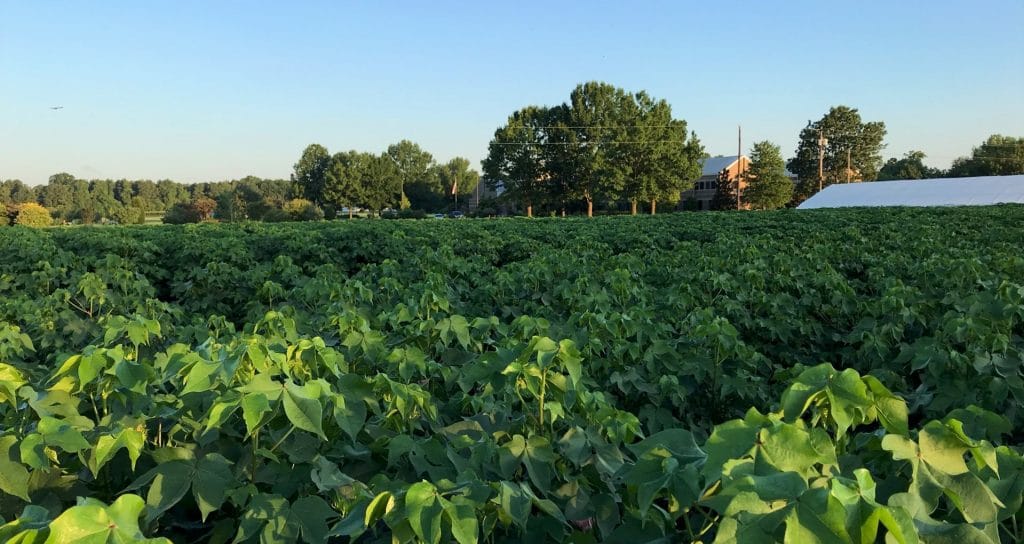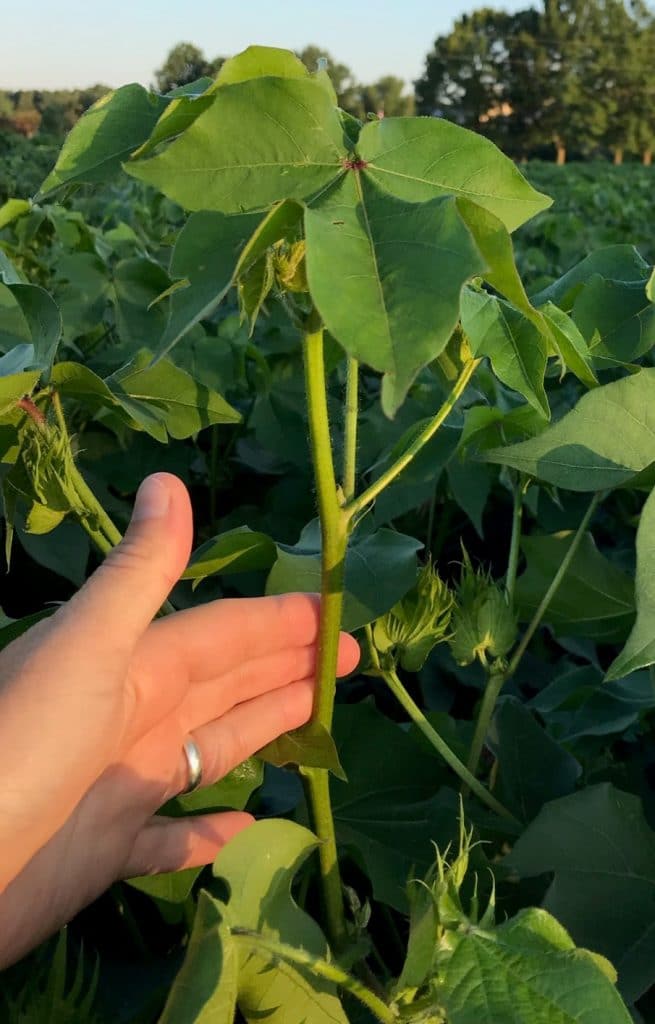
The calendar says late July, but the chill on the wind this morning made it seem like we had to be deep enough into the football schedule for a solid SEC football match-up on Saturday. This blog covers a few points concerning cotton growth under mid-season daytime and nighttime temperatures between 85 and 65 following excessive rainfall.
I’ve been fielding questions lately on managing plant growth after Hurricane Barry’s deluge coupled with the ‘cool’ temperatures forecast for this week. Most of these discussions have led to someone mentioning ‘cotton likes it hot’ followed by a comment indicating cotton growth may slow this week. I do not believe it will. Instead, I’m concerned it may be difficult to slow down. Many are reporting a decent physiological square shed after the cloudy conditions last week. If you add all these factors up, it appears the crop may be deep into the secondary and we don’t have the best safety.
It is true that cotton likes a long growing season and we typically make better crops when we have more heat units. Good years, however, are typically not associated with blistering mid-season heat. Instead, they are associated with warmer springs and falls. High humidity and 95F+ daytime temperatures result in plant stress. Cotton is pretty good at handling that stress, but most scientific literature suggests ideal growing temperatures fall around 86F during the day and 68F at night. Those temperatures closely match our current forecast. Couple that with another good rain across much of West Tennessee last night PLUS a decent environmental square shed and you have all required conditions for excessive vegetative growth.
Just a reminder, the most commonly used 4.2% mepiquat chloride products have a rainfast period of close to 8 hours. Using more expensive products like mepiquat pentaborate or mepiquat chloride + cyclanilide or incorporating an adjuvant can reduce that rainfast period. If rain falls within a few hours of your application, monitor growth closely and be ready to re-apply. Again, watch the fourth and fifth internodes down from the top of the plant. These are the internodes that represent current growing conditions. 
With a little luck, we should see developing bolls begin to slow vegetative growth in the coming weeks, but don’t expect that slowed growth to occur now.
Take home: Expect aggressive PGR applications to be warranted on many acres this week.

